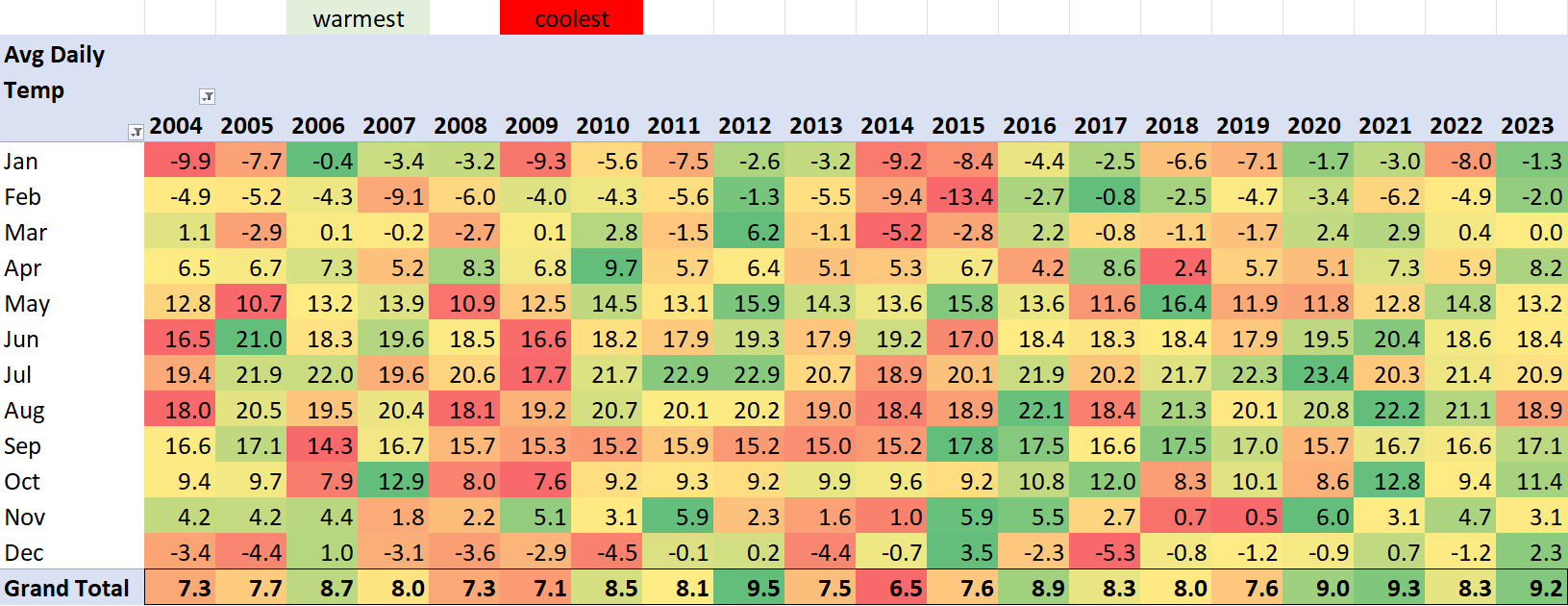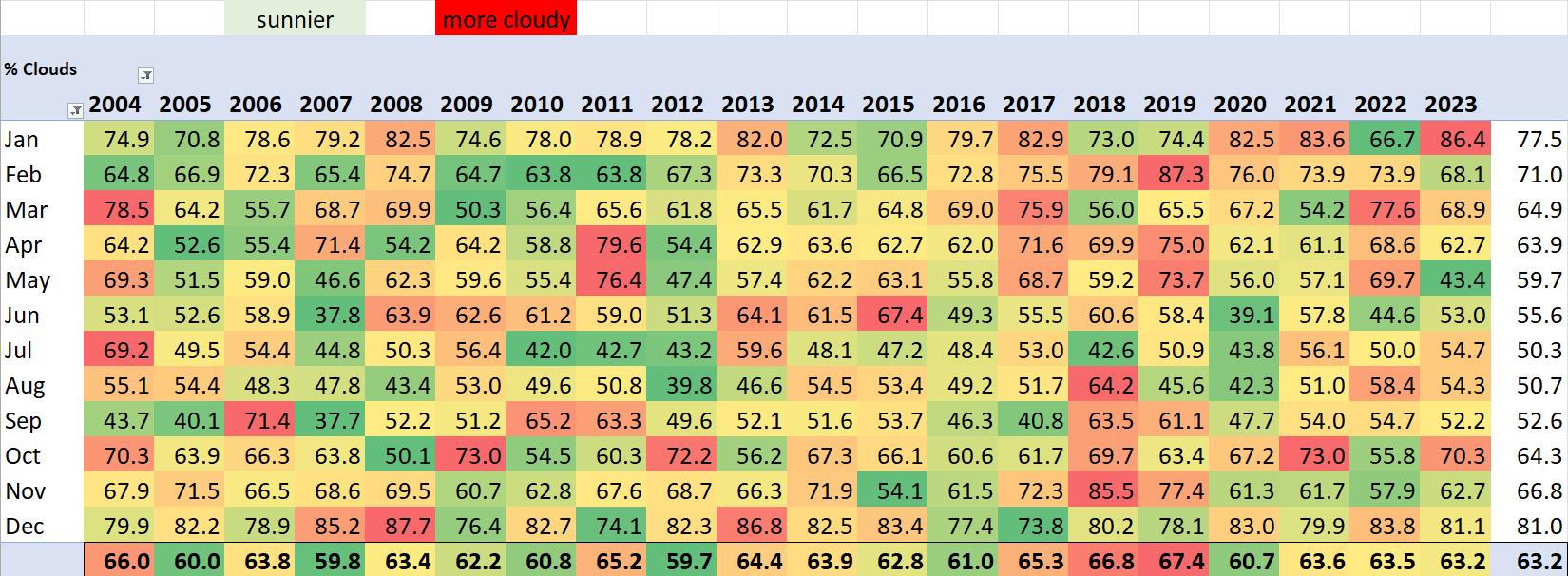As gardeners, we may feel we’re in tune with the weather, but our perceptions are often skewed by impressions of events that don’t always align with meteorological conditions.
I recently pulled some historical weather data for our area, thinking that 2023 was colder than usual. I was very surprised to see that overall, we experienced the third warmest year on record since 2004 (which is when we moved here).

So, what made me think the year was so much colder?
The problem of selective memory
The first reason is selective memory. I documented some pretty chilly nights in January and February in my garden journal. These cold snaps gave me some severe angst over the heat in the greenhouse, so much so I invested in radiant heat for the greenhouse floor. It was these specific events that made me think the entire winter was colder than normal. Yet it wasn’t. On average January and February ended on the warm side.
It was cold during the growing season
Second, our perception of weather is influenced by seasonality bias – and for a gardener, that means the growing season. How we feel about the weather from May through roughly August is how we view the entire year. Well, at least here, my memory served me well. We had cooler-than-normal weather in my Zone 5 Southern Ontario garden for most of May, June, July and August. It only warmed up in September once most of the garden was finished actively growing and certainly after most of the vegetable garden had already been harvested.
Interestingly, seasonality bias could go the opposite way in our area for 2023. December was unusually warm, and we had a green Christmas this year. That will skew many towards perceiving 2023 as a warm year. Again, that’s the trouble with our memories. We latch on to an event or two. This is not a post about climate change; it is about how we regard or remember seasonal weather patterns.
There were more cloudy days
Third, it was cloudy this year. While not our cloudiest year on record, only May experienced more sun hours than clouds. The lack of sunshine to a gardener feels like a lack of warmth. A sunny but cool day will generally feel warmer and more pleasant than a cloudy and somewhat warmer day. Sun makes us happy as it does our plants. I know the lack of sun and cooler summer months impacted the taste of our tomatoes this year. So I’ll remember 2023 as a cool growing year regardless of what the rest of the year did.

We had fewer extreme heat days
Lastly, we had only 16 days of 30°C and over in 2023, down from 27 in 2022 and a high of 44 in 2012. It’s much easier to work in the garden when the temperatures are moderate. So more moderate days this year meant I felt the summer was cooler.

Weather is variable and averages don’t matter
Lastly, averages don’t mean a lot. The overall highs and lows can shift, yet the average can remain the same. For interest’s sake, here are the monthly minimum and maximum temperatures in our area over the last 20 years. Again, this tells an interesting story of how hard it is to figure out just what the season was like. In January of this year, our minimum temperature was only -15.8 °C: cold but not as cold as in 2022 when the low was -25.8°C. Yet what made January colder on average was the fact that the high temperatures were depressed. Our high in January was only 7.1°C, below the norm. February had the exact opposite trend.


So there you have it – a reminder that weather isn’t always what it feels like or what we remember.